Body
Aretha J.’s 93rd birthday celebration had it all: A birthday balloon … her kids beside her to celebrate another year in her long, active and happy life … a celebratory t-shirt that read “Super Aretha” on the front, with a sparkly 93 on the back.
The festivities took place at Shirley Ryan AbilityLab’s Homewood DayRehab Center, where Aretha spent more than two months giving it her all in intensive physical therapy (PT) and occupational therapy (OT).
Her goal was to learn how to use a new prosthesis following an above-knee amputation of her left leg — and, importantly, to gain skills that would allow her to maintain her independence and continue to live at home.
For Aretha’s family members, who lovingly call her “Miss Independence,” there never was any doubt that she would participate enthusiastically in therapy — and her 93rd birthday marked an important milestone to celebrate how far she had come since her surgery.
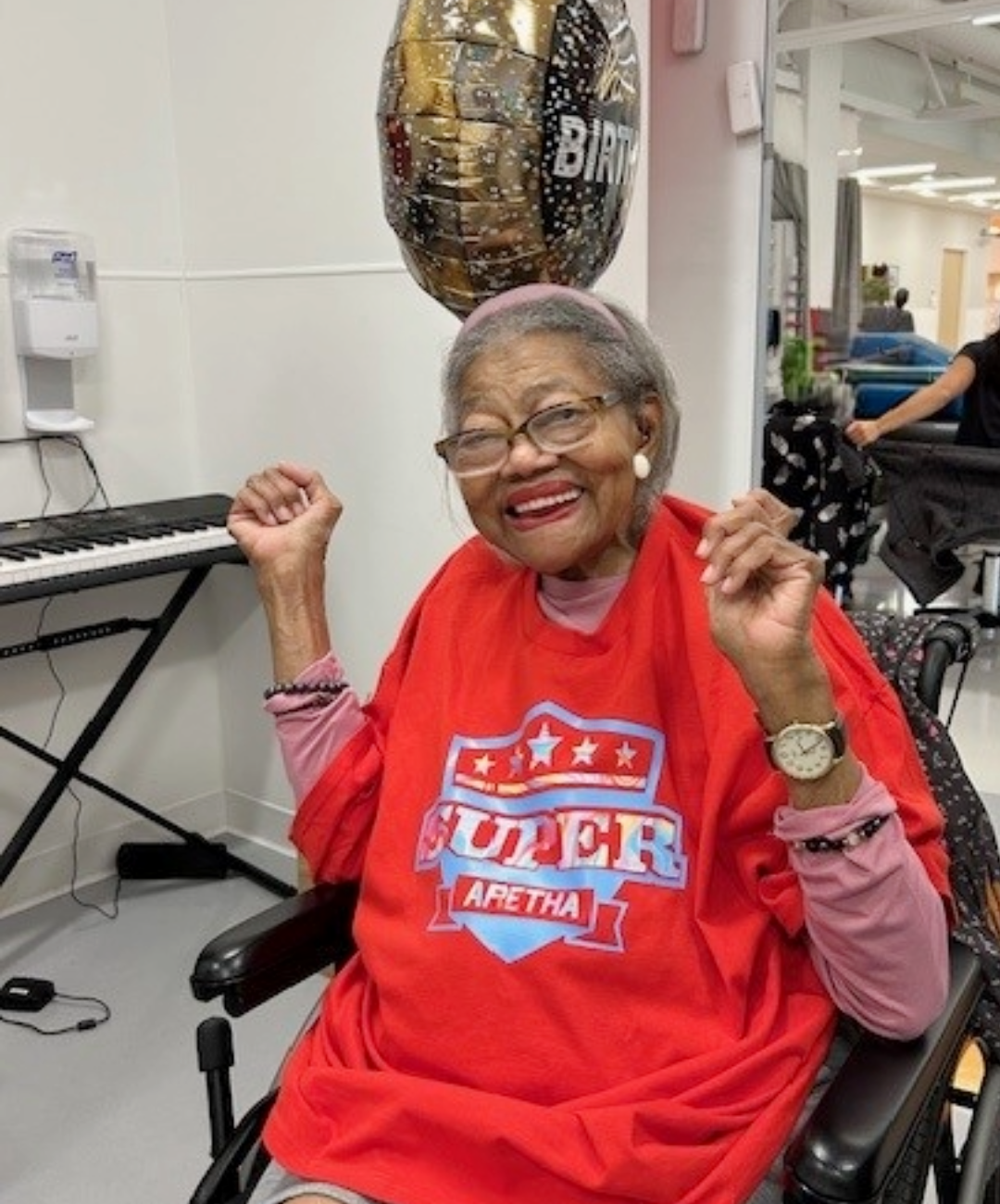
With Amputation, Aretha Focuses on Independence
Body
Aretha spent her career as a sixth-grade teacher, and her curiosity and desire to learn new things persist today, several decades after her retirement. She is connected to her family, including her three children, Frances, LaVerne and Marla and her granddaughter, Tara, who lives with her.
Aretha still resides in the same home where she raised her family, continuing to run the household and pay bills on her own, and, being the “social butterfly” that she is, staying in touch with her friends and past students — many of whom are now in their 50s and 60s.
However, Aretha faced a setback a few years ago when she began to experience circulation issues that ultimately led to her needing an amputation.
She came to Shirley Ryan AbilityLab to recover in inpatient care for two weeks after her surgery. She then transitioned to DayRehab to begin pre-prosthesis training, with the hopes of getting fitted with a prosthetic leg to maintain her mobility — and her independence.
Aretha Embarks on Pre-prosthesis Training
Body
Pre-prosthesis training is a necessary first step toward receiving a prosthesis. The goals of pre-prosthesis training are to strengthen the residual limb, improve single limb balance as well as core balance, and improve functional range of motion in the residual limb.
As part of Aretha’s pre-prosthesis training, she first focused on standing and hopping on one leg with the use of a walker. She kept building strength at home outside of her PT and OT sessions, too — consistently working on leg exercises, lifting small dumbbells three times a day to build muscle, drinking protein shakes and practicing standing for 10 to 15 minutes at a time. Ultimately, she was able to stand for 28 minutes without losing her balance.
“I didn’t try standing longer than 28 minutes because I was tired of breaking my own records!” quipped Aretha.
A Great Candidate for a Prosthesis
Body
After success in pre-prosthesis training, Aretha was ready to be fitted for a prosthetic leg.
One of the benefits of Shirley Ryan AbilityLab’s approach is the coordinated care and collaboration between therapists, prosthetists and patients.
As part of Aretha’s prosthetic evaluation, Ashley Zinnamon, certified prosthetist orthotist (CPO), discussed Aretha’s home life, activity level, hobbies and goals so she could design the best prosthesis. The final device was a custom, above-knee prosthesis with a soft silicone liner to protect the skin; a carbon fiber socket for durability; a prosthetic knee joint that could be locked and unlocked for stability as Aretha progressed in therapy; and a flexible prosthetic foot with properties to adapt on uneven surfaces.
Although it is somewhat rare for a person in their 90s to get a prosthesis, Ashley said Aretha’s desire for independence, her commitment to rehabilitation and her amazing family support are among the reasons why she was a great candidate for one.
“She was determined to learn anything she needed to know about using a prosthesis, which didn’t surprise me too much after hearing about her background in education,” said Ashley. “But it was also more than that. She always had a positive attitude at every appointment and focused on doing things the right way — and doing them well.”
Embracing Physical & Occupational Therapy
Body
Now with a prosthesis, Aretha returned to DayRehab for a second round of intensive physical and occupational therapy.
In PT, she dutifully practiced walking with the prosthetic leg — participating in six-minute walk tests while improving her pace and focusing on good form; passing in and out of cones to learn how to change direction; and backing up to sit down safely in her wheelchair.
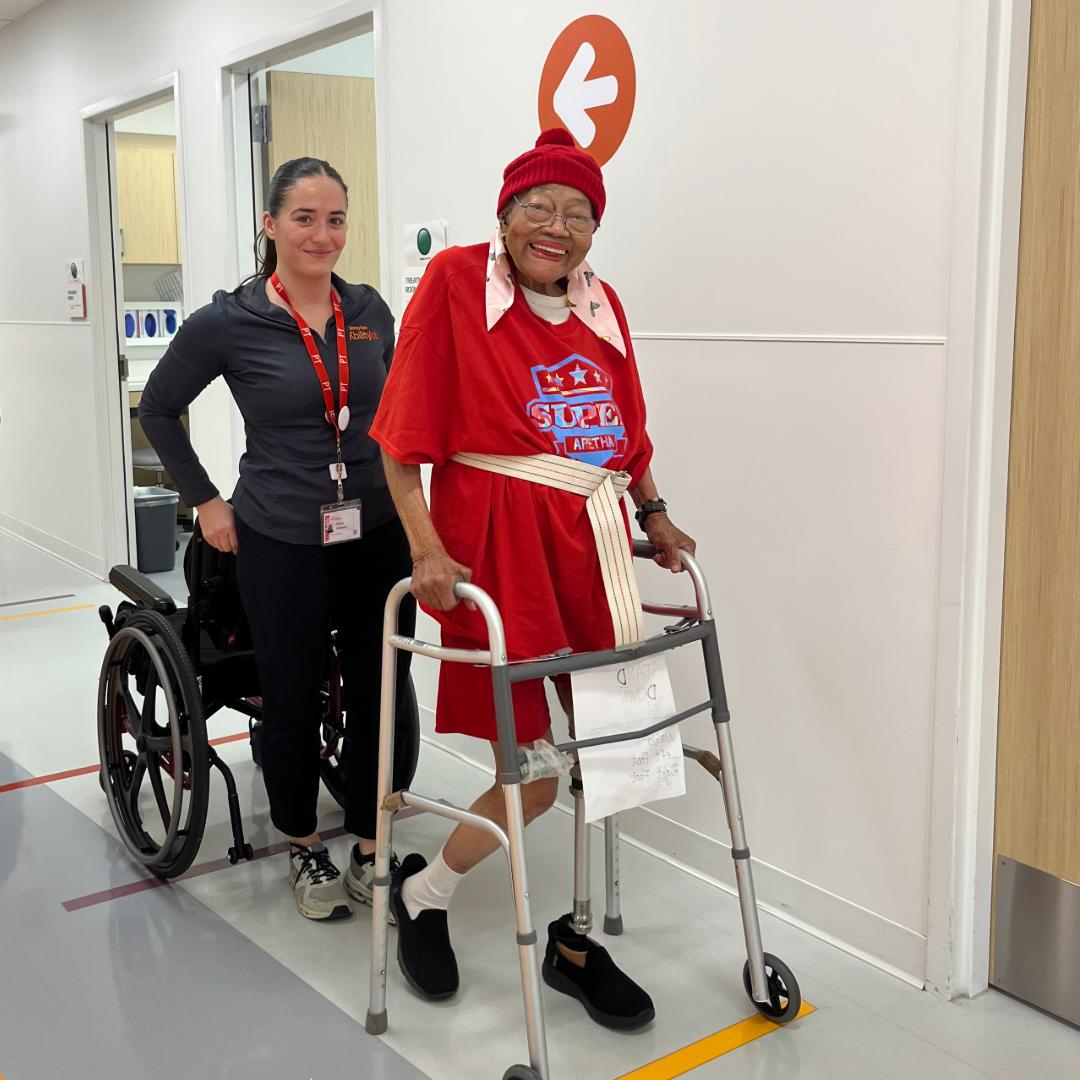
“I have to look up and look forward, and keep good posture when I walk,” said Aretha.
In OT, she practiced regular activities of daily living while standing on her prosthetic leg —activities she would need to do on her own at home. She learned how to take the prosthesis on and off by herself, and practiced activities like making a bed and doing laundry.
Several OT sessions were focused on kitchen tasks. Aretha carried items through the DayRehab kitchen while utilizing a tray that snapped onto the top of her walker. She took eggs and butter out of the refrigerator, as well as a plate from an upper cabinet and utensils from a drawer. She then whisked up an egg, walked to the microwave to heat it up and then moved over to the sink to wash the dishes.
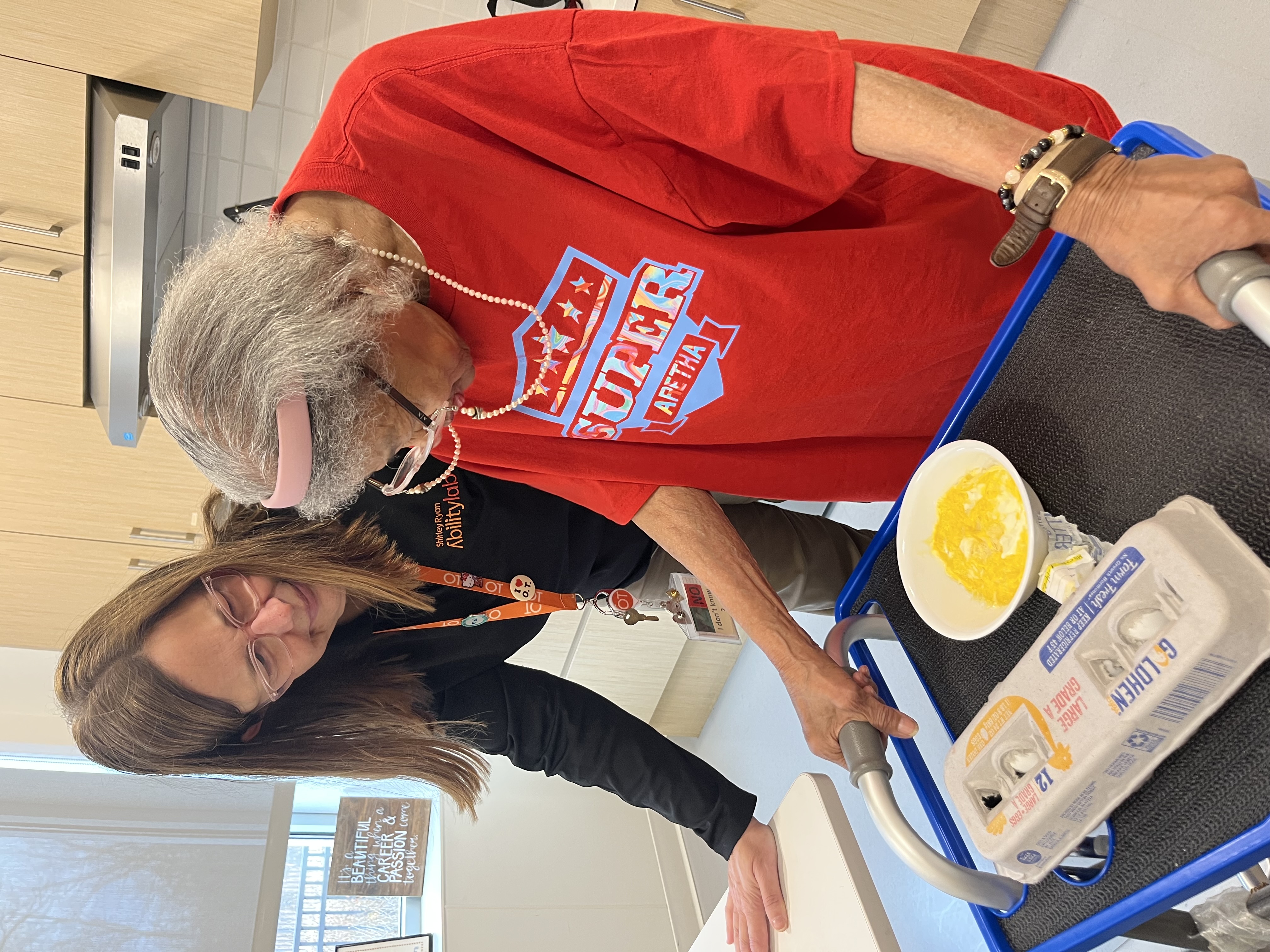
“Aretha worked so hard every day that she was in therapy. I loved her positive attitude and willingness to try anything to improve her success with using her prosthesis. She brought a smile to therapy sessions every day,” said Laura Wodarski, Aretha’s occupational therapist who helped to plan Aretha’s birthday celebration.
“When Aretha’s 93rd birthday came around, we knew we had to make it special with her Super Aretha shirt as a symbol of all her hard work,” said Laura.
All told, Aretha went to DayRehab for two hours a day, three days a week for more than two months, making significant progress in her mobility and function while maintaining a high intensity in therapy.
“The amount of therapy she received played a key role in Aretha’s success,” said Ashley. “She was able to have therapy before and after receiving a prosthesis, so she got the opportunity to work on things like strength, balance and coordination — all of which play a part in successfully using a prosthetic limb.”
Another Milestone: Graduation from DayRehab
Body
On Aretha’s final day at DayRehab — her “grad day” — she reached yet another milestone.
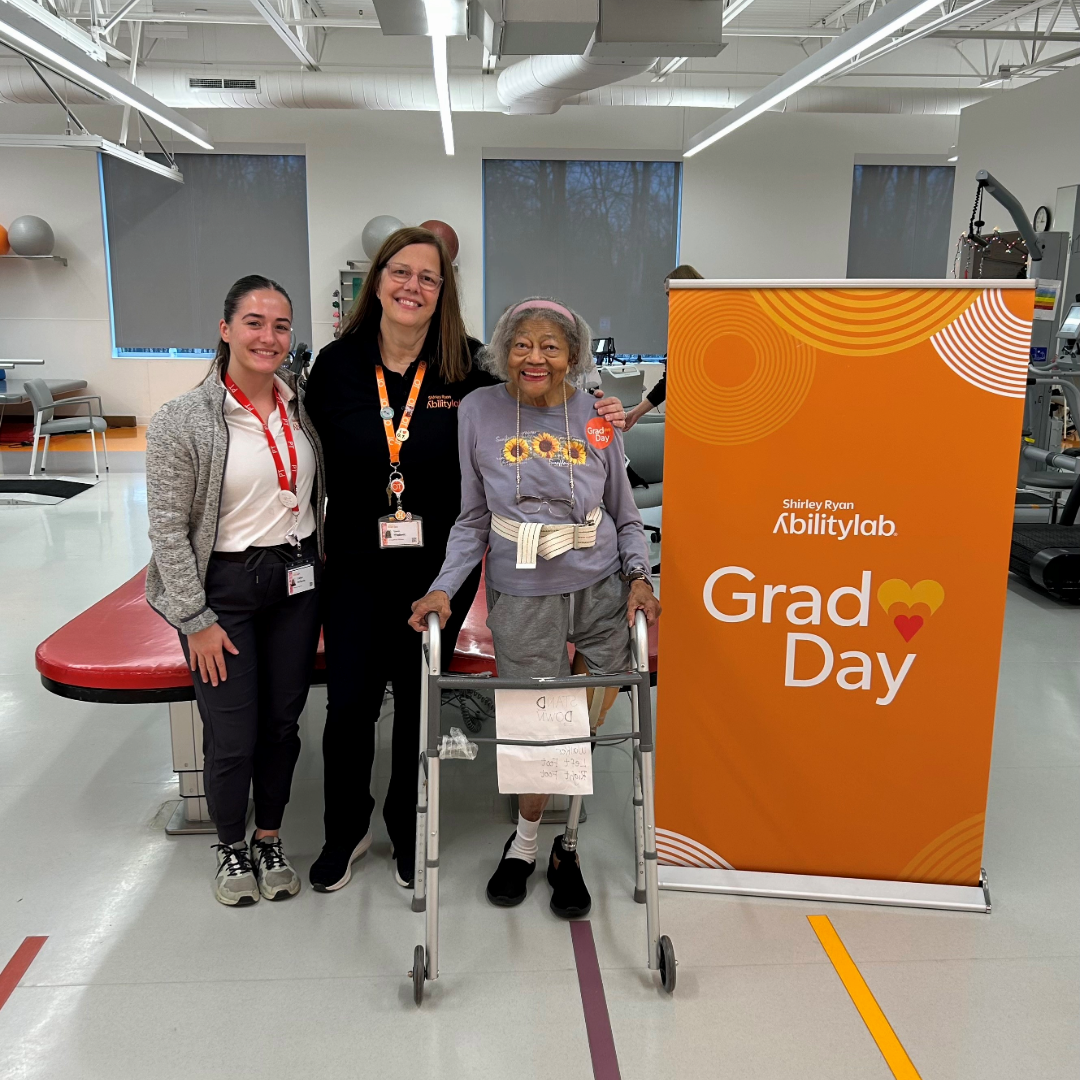
Instead of taking off her prosthesis at the end of therapy and having her son, LaVerne, help her to the car in her wheelchair, Aretha walked out of the DayRehab building on her own. Her family, therapists and other staff members cheered her on as she walked to the parking lot and got into the car by herself.
“Aretha proved to me and the younger therapists and patients that one should never give up at any age,” said Laura. “The smile on her face as she waved from the window of the car brought tears to my eyes. Though I was sad I wouldn’t be able to work with her anymore, they were tears of joy knowing I helped someone very special achieve the most important goal of all …to walk and resume independence with their daily activities.”
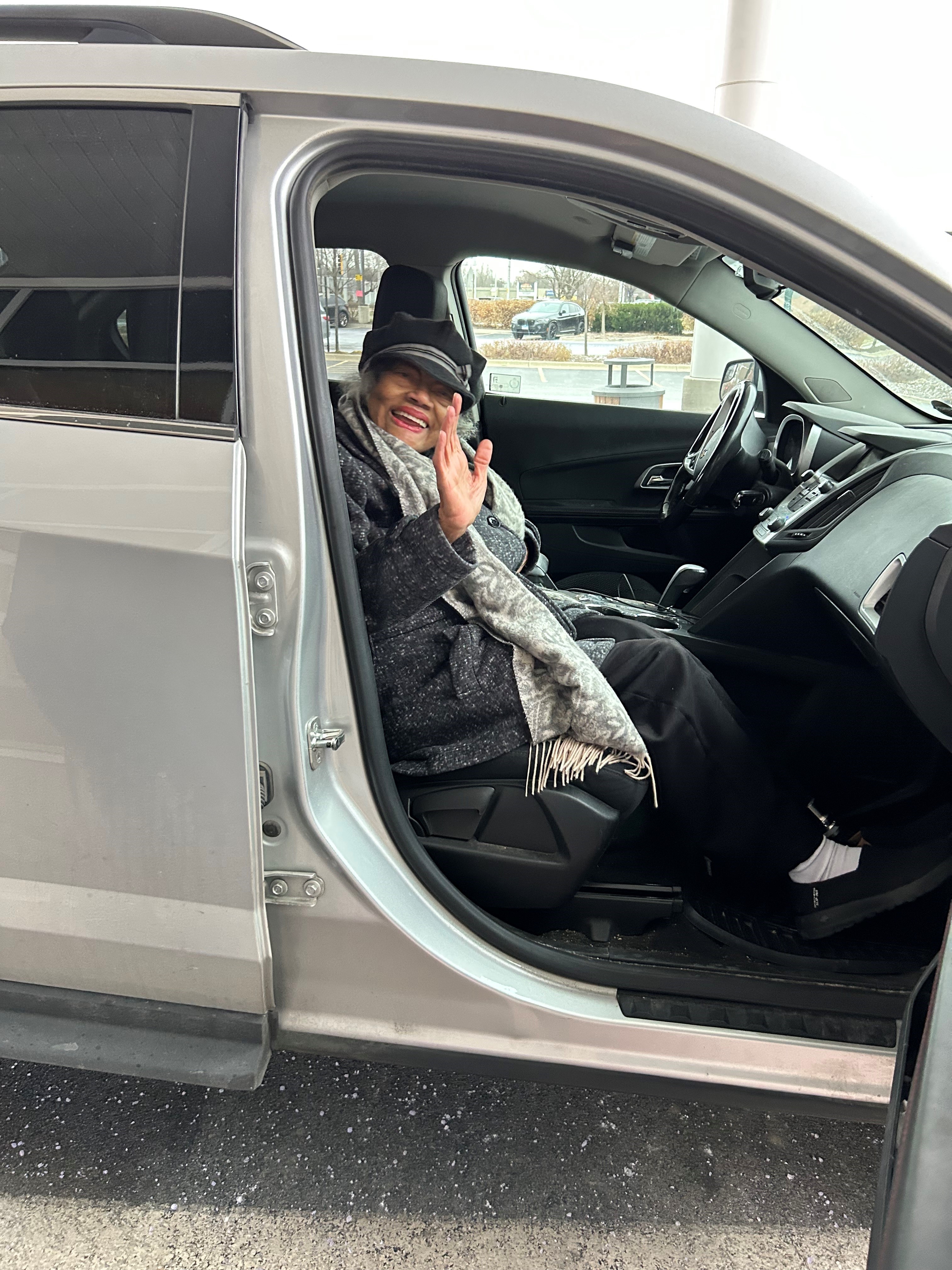
In Aretha’s next chapter, her goals are to keep building on her skills from DayRehab and walking around her home for longer stretches of time while wearing her prosthesis. Of course, she plans to spend time with her beloved family as well.
“My children are wonderful. I’m the happiest person on earth,” said Aretha.

